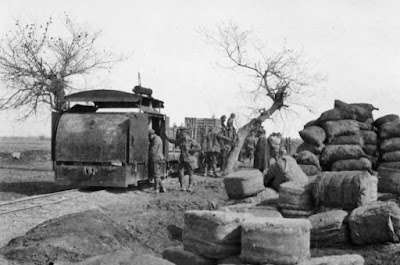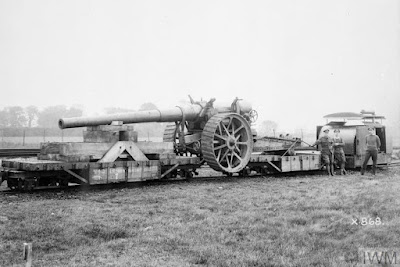LR3098 is a Simplex 40HP Protected Loco, a type that was used extensively on the Western Front during the First World War.
LR3098, which did not see any war service having not been completed until 17/12/1918, worked from c1921 to 1980 at the Sewage Works in Leeds. In 1981 it was aquired by the National Railway Museum at York for preservation.
.JPG) |
| Simplex 40HP Protected Loco Beamish June 2022 |
.JPG) |
| Simplex 40HP Protected Loco Manufacturers Plate |
During the First World War miles of narrow gauge track was laid to transport ammunition and supplies from railheads to the front line.
Standard gauge trains would run from ports and supply depots to railheads to the rear of the front line. There the combat supplies would be transloaded onto the narrow gauge trains to be taken to the front line.
The problem with many of the narow gauge lines was steam engines gave their loccation away, consequently the War Office looked to the use of locomotives powered by an internal combustion engine.
The Motor Rail & Tram Company won a tender in January 1916 and produced narrow gauge locomotive for use on the Western Front. A protptype proved succesfull and a asignificant order placed for more locomotives.
The Simplex 40HP Protected loco was an armoured version, made to a specification defined by the Ministry of Munitions. Over 900 locomotives would be manufactured in the course of the war.
.jpg) |
| Simplex 40HP Protected Loco LR 2223 |
.jpg) |
| Simplex 40HP Protected Loco Western Front |
 |
| Simplex 40HP Protected Loco transporting stores |

.jpg)
%20damaged%20by%20Shellfire.jpg)




.JPG)


.jpg)
.jpg)
.jpg)
.JPG)
.JPG)
.JPG)
.JPG)









.JPG)
.JPG)
.JPG)
.JPG)
.JPG)
.JPG)
.JPG)